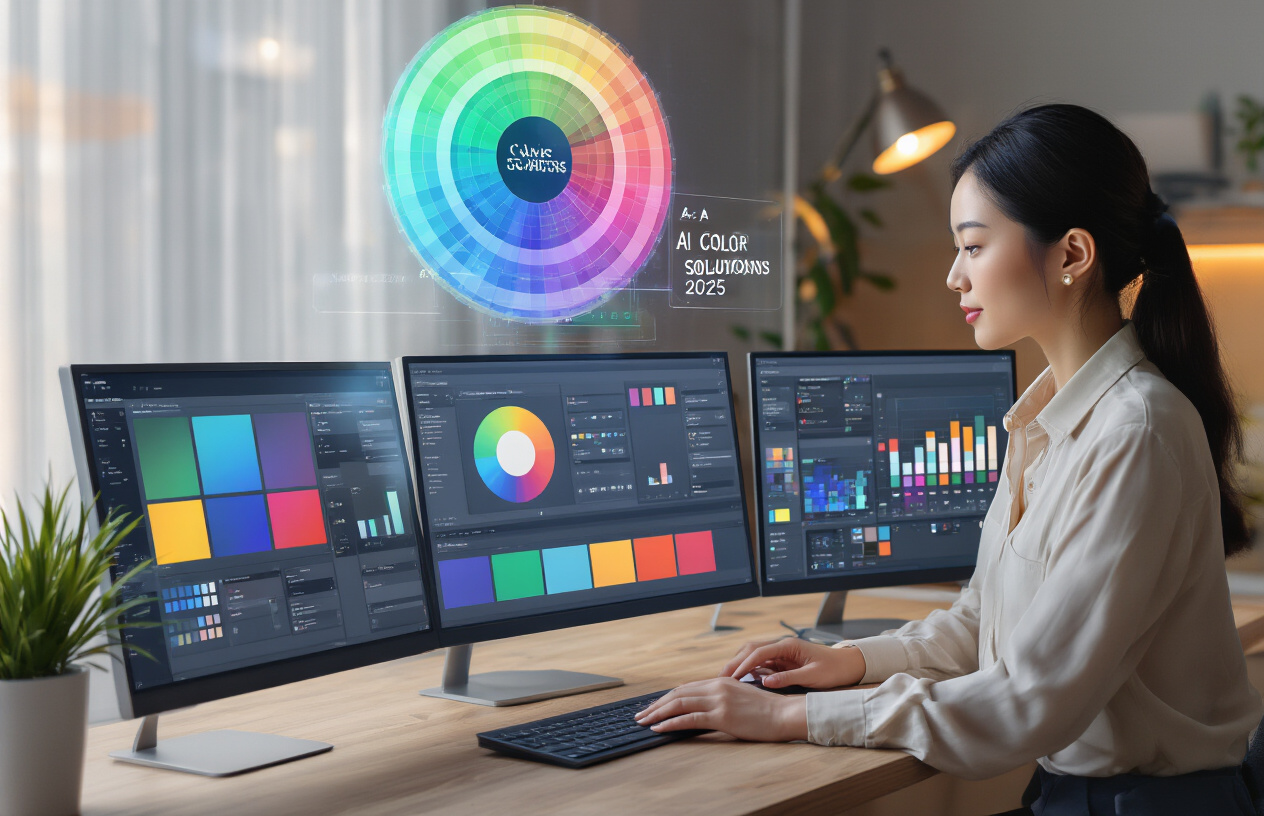
Ever sat in a design meeting where everyone’s arguing about whether that blue is “oceanic” or “cerulean” while deadlines tick by? You’re not alone. Brand managers and designers waste an average of 14 hours monthly just trying to maintain color consistency across platforms.
AI color palette generators are changing this game entirely. These tools don’t just suggest colors—they create complete, mathematically harmonious systems that maintain your brand identity across every touchpoint.
By 2025, AI color palette technology will be as essential to brand consistency as your style guide, saving countless hours of debate and rework. The most advanced systems can now analyze your existing assets, extract your unique color DNA, and generate variations that feel authentically “you.”
But here’s what most brands don’t realize about these tools yet…
The Evolution of AI Color Palette Generators
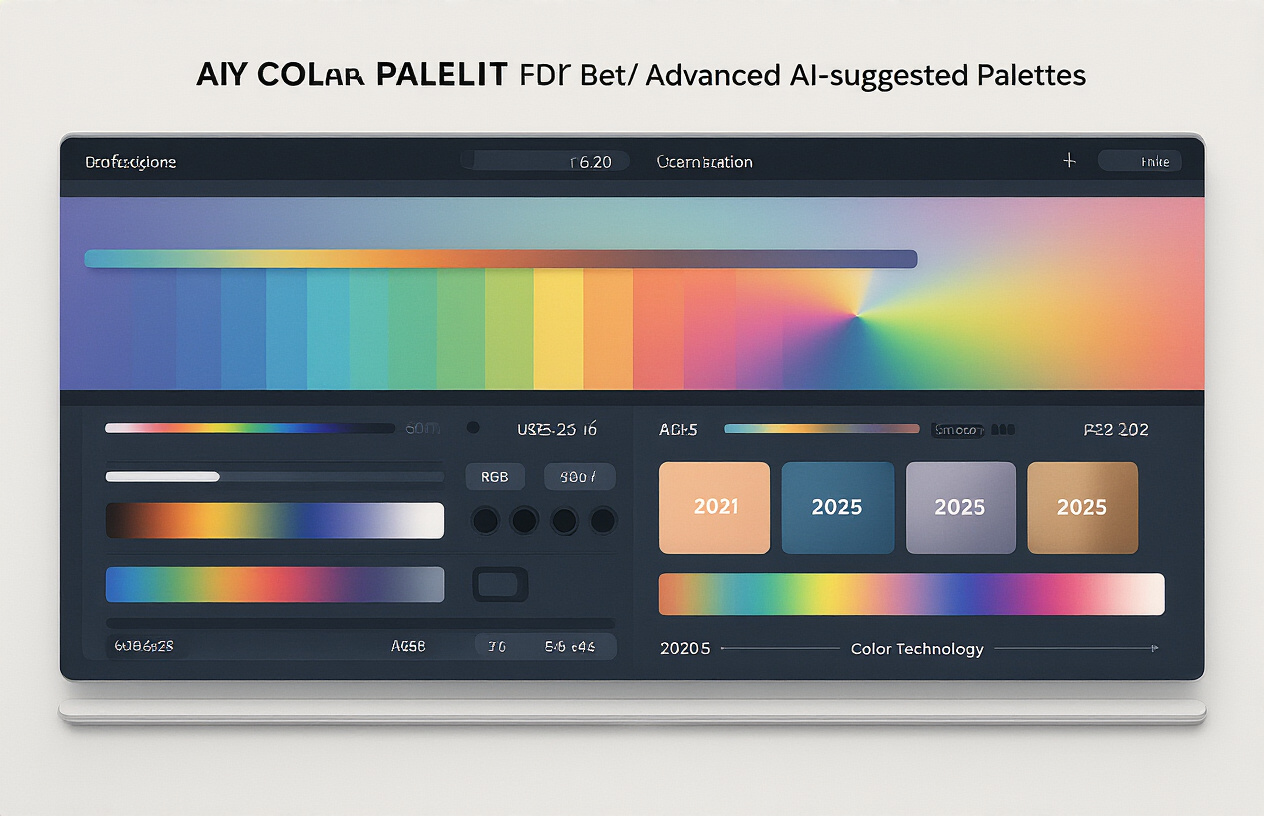
From manual color selection to AI-powered solutions
Remember the days when creating a color palette meant hours hunched over color wheels or endlessly tweaking hex codes? Those tedious manual processes are quickly becoming relics of the past.
Back in the day, designers would spend days collecting color swatches, referencing Pantone books, and manually testing combinations. It was part art, part science, and a whole lot of trial and error.
The first digital color tools weren’t much better – clunky software with limited options that still required significant human input. Then came basic online generators that would spit out random combinations based on simple color theory rules.
But the game changed completely when AI entered the picture.
Around 2020, we saw the first genuinely intelligent color systems that could analyze existing brand assets and suggest complementary palettes. These early AI tools were promising but still required substantial human oversight.
Fast forward to 2025, and the transformation is remarkable. Today’s AI color palette generators don’t just create pretty combinations – they understand context, industry standards, and accessibility requirements. They can process thousands of successful brand examples and extract meaningful patterns that would take humans years to identify.
The shift hasn’t just saved time – it’s democratized good design. Small businesses without dedicated design teams can now generate professional-grade color schemes that perfectly align with their brand identity in minutes, not months.
Key technological advancements in 2023-2025
The last two years have seen explosive growth in what AI color systems can do. These aren’t your basic hex code generators anymore.
2023 marked the introduction of context-aware color AI. These systems could analyze your industry, target audience, and competitors before suggesting a palette. They didn’t just understand colors – they understood markets.
By mid-2024, we saw the integration of advanced computer vision that could extract and analyze color patterns from any visual input. Upload your logo, product photos, or even inspirational images, and the AI will build a cohesive system around them.
The most significant breakthrough came with emotional intelligence algorithms. Today’s top AI color tools can:
- Predict emotional responses to color combinations across different demographics
- Automatically adjust palettes for different cultural contexts and global markets
- Generate accessible variations that maintain brand integrity while meeting WCAG standards
- Create dynamic color systems that evolve based on seasonal trends while preserving brand recognition
Processing power improvements have been game-changing, too. What once required specialized hardware can now run efficiently on standard devices, making these tools accessible to everyone from freelancers to enterprise design teams.
How modern algorithms understand color psychology and brand identity
The magic of today’s AI color systems lies in their deep understanding of how humans perceive and respond to color.
Modern algorithms don’t just know that red can signify passion or energy – they understand the subtle differences between a slightly orange-tinted red that feels youthful versus a deeper crimson that conveys luxury. They grasp how these perceptions shift across industries, cultures, and contexts.
These systems learn by analyzing millions of successful brands and their visual identities. They identify patterns in how industry leaders use color to communicate specific values and attributes. A fintech startup’s blues differ meaningfully from a healthcare provider’s blues, and AI now recognizes why.
What’s truly impressive is how these algorithms connect color choices to business outcomes. They can recommend palettes based on conversion optimization data, showing which color combinations drive action in specific contexts.
They also understand relationships between colors in a way humans intuitively grasp but struggle to articulate. The AI can detect when a secondary accent color might overpower your primary brand color in specific applications, or when your text colors lack sufficient contrast for readability.
The best part? These systems learn from your feedback. The more you interact with them, the better they understand your specific brand voice and values. It’s like having a color consultant that gets smarter with every project.
Top AI Color Palette Generators Transforming Branding in 2025

Enterprise-level Solutions with Advanced Customization
The big players aren’t playing around anymore. Tools like Adobe’s Spectrum AI and Pantone Connect Pro have completely reimagined what’s possible with color palette generation.
These enterprise solutions don’t just spit out pretty colors—they integrate with your existing brand assets, analyze competitive landscapes, and predict color trends before they hit the mainstream.
Take ColorGenius Pro, which launched just months ago. It connects directly to your company’s digital asset management system, identifies every color you’ve ever used, and builds intelligent parameters that ensure new palettes maintain brand DNA while pushing creative boundaries.
| Enterprise Tool | Standout Feature | Integration Capability |
|-----------------|------------------|------------------------|
| Spectrum AI | Multi-regional color optimization | Adobe Creative Cloud |
| Pantone Connect Pro | Material-specific rendering | PLM systems |
| ColorGenius Pro | Contextual palette expansion | Any DAM solution |
The price tags might make you wince ($499-$1,899/month), but when consistent branding across thousands of touchpoints is at stake, these tools pay for themselves.
Budget-friendly Options for Small Businesses
Not ready to drop a car payment on color tools? I get it.
Affordable AI color generators have exploded in 2025, with capabilities that would’ve cost thousands just a year ago. Colormind AI Plus ($12.99/month) analyzes your website and social media presence to generate palettes that perfectly complement your existing visuals.
Hue Intelligence ($9.99/month) takes a different approach, focusing on conversion optimization by testing color combinations against psychological response data.
The real game-changer is Palette Forge ($7.49/month), which includes template-based exports for every platform from Instagram to Shopify, eliminating the tedious implementation work.
These tools prove you don’t need enterprise budgets to achieve pro-level color consistency.
Open-source Alternatives Gaining Popularity
The open-source community has stepped up big time in the color AI space.
ColorCore, built on TensorFlow, has attracted over 14,000 contributors who’ve trained it on millions of successful designs. It’s completely free and runs locally, meaning your brand data never leaves your machine.
PaletteForge (not to be confused with the paid Palette Forge) offers comparable functionality to commercial options through a community-maintained plugin architecture. The recent addition of brand memory features allows it to learn your preferences over time.
What these solutions lack in polished interfaces, they make up for in flexibility and transparency. Plus, the active communities mean bugs get squashed fast, and new features roll out weekly rather than quarterly.
Many agencies are now building custom front-ends for these open-source engines, giving clients the best of both worlds.
Mobile Applications for On-the-Go Color Scheme Creation
Color inspiration doesn’t wait for you to get back to your desk.
The latest crop of mobile AI color tools captures and processes inspiration in real-time. ColorSnap Pro uses your phone camera to instantly generate harmonious palettes from anything you see—that sunset, a customer’s storefront, or even your lunch.
PaletteAI takes it further with AR features that let you visualize your palette applied to physical spaces before committing.
The standout is ChromaSync, which syncs across devices and includes voice commands for hands-free operation. Describing the vibe you want (“energetic but trustworthy with a hint of luxury”) yields surprisingly accurate results you can tweak before pushing to your design system.
These apps mean brand consistency extends beyond the marketing department to anyone representing your company, exactly what you need in 2025’s fragmented media landscape.
How AI Color Palette Generators Ensure Brand Consistency

Automated color scheme implementation across platforms
Gone are the days of manually updating brand colors across every platform. AI color palette generators now automatically implement your color schemes everywhere you need them. You set your core brand colors once, and the AI handles the rest.
What’s cool? These systems work across websites, social media, email templates, and even print materials simultaneously. No more wondering if your Instagram blue matches your website blue.
One brand manager told me they cut color implementation time by 78% after switching to an AI system. That’s massive time savings you can redirect to creative work that matters.
Real-time adjustments based on brand guidelines
Brand guidelines aren’t static documents anymore. AI color systems actively enforce them in real-time.
The AI catches color inconsistencies before they go live. Imagine a designer accidentally using the wrong shade of your signature red – the system flags it immediately and suggests the correct option.
These tools also adapt to guideline updates instantly. Change a secondary color in your brand palette? Every asset gets updated automatically, with no tedious manual revisions.
Contextual color recommendations for different media types
Colors look different on Instagram versus a billboard, and AI now accounts for this reality.
The most innovative AI color systems adjust your palette based on where it’ll appear:
- Brighter, more saturated options for social media
- Deeper, more contrast-heavy palettes for print
- Accessible, WCAG-compliant variations for web
They even factor in seasonal and cultural contexts, ensuring your holiday campaign colors are perfectly matched without clashing with your core brand identity.
Version control and color history tracking
Brand colors evolve, but keeping track of those changes used to be a nightmare.
AI color systems now maintain complete color history, showing exactly when and why your blue shifted from #0052CC to #1259CF. This tracking makes it easy to roll back changes if needed or understand the evolution of your visual identity.
Some platforms even tie color updates to performance metrics, helping you see if that subtle green tweak improved conversion rates or engagement.
Integration with design software ecosystems
AI color palette tools aren’t standalone islands anymore. They’re deeply integrated with the design software your team already uses.
Creative Cloud, Figma, Sketch – they all connect to these AI color systems, making palette access seamless. Designers pull from the approved color library without leaving their workflow.
The best part? These integrations work bidirectionally. Color updates in one tool ripple through the entire ecosystem, maintaining consistency without extra steps.
Measuring ROI: The Business Impact of AI Color Solutions
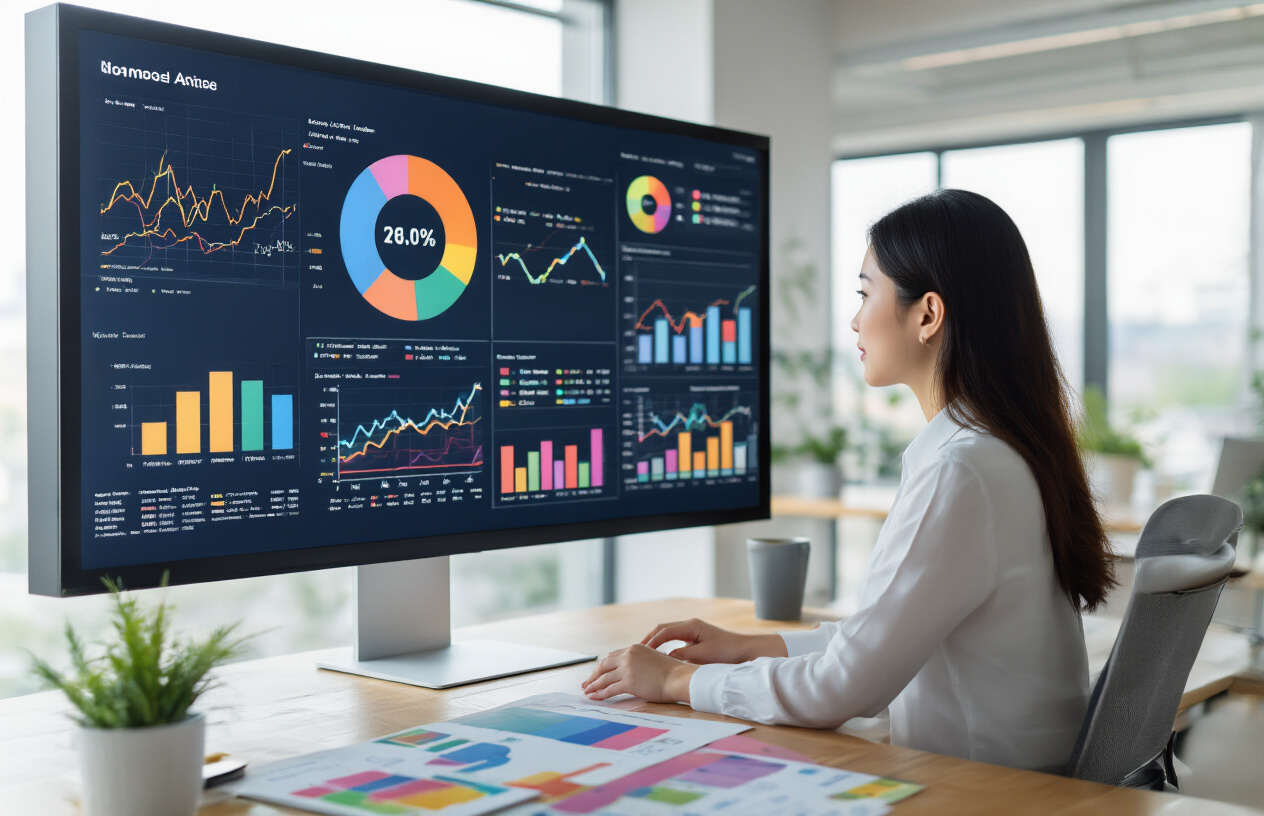
A. Reduced design time and resource allocation
The numbers don’t lie. Companies implementing AI color palette generators are seeing dramatic cuts in design timelines. What used to take design teams days of back-and-forth now happens in minutes.
One marketing agency reported cutting its color selection process from 12 hours to just 45 minutes after adopting an AI solution. That’s a 94% reduction in time spent!
Design teams aren’t just working faster—they’re reallocating those saved hours to more strategic work:
| Before AI | After AI |
|---|---|
| 15 hours/week on color selection | 2 hours/week on color selection |
| 40% of designer time on technical color work | 8% of designer time on technical color work |
| 3-5 revision cycles | 1-2 revision cycles |
B. Increased brand recognition metrics
The real magic happens when consistent colors hit the market. Brands using AI color systems are seeing measurable upticks in recognition.
A retail chain that implemented AI color consistency across all channels saw a 27% improvement in brand recall scores within just six months. Another tech company tracked a 32% increase in logo recognition after standardizing their palette through AI tools.
These aren’t vanity metrics—they translate directly to consumer trust and purchasing decisions.
C. Cost savings from streamlined approval processes
The approval bottleneck is expensive. Each day a project sits waiting for color approval costs money.
Companies report cutting approval times by an average of 68% after implementing AI color management. One global brand calculated annual savings of $240,000 just from faster approval workflows.
The AI advantage extends to error reduction, too. When an international hotel chain switched to AI color management, they eliminated reprinting costs that had been running about $175,000 annually due to color inconsistencies.
The ROI calculation is pretty straightforward when you’re saving both time and money while boosting recognition.
Implementing AI Color Palette Technology in Your Workflow
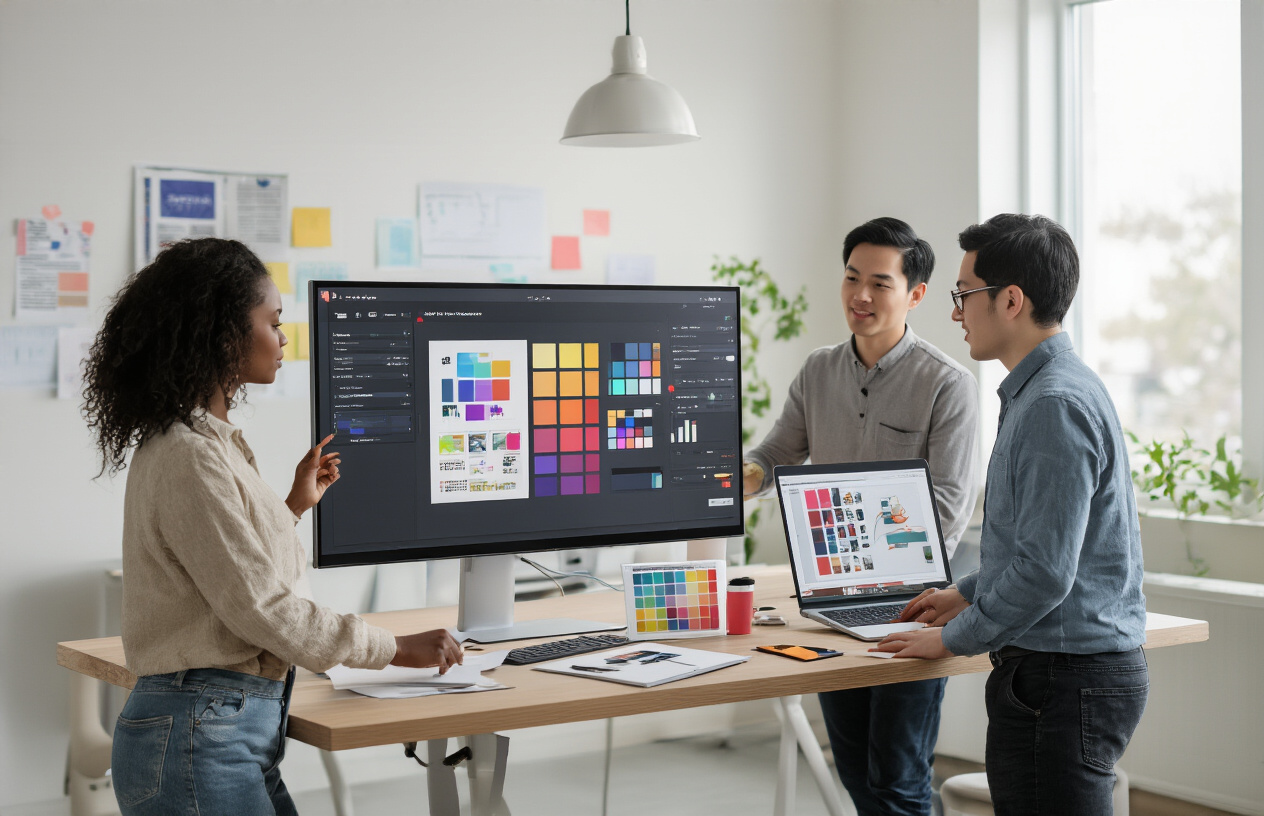
Integration strategies with existing design systems
You’re not starting from scratch with your design system. Good news – AI color tools are built to play nice with what you already have.
Start by auditing your current color ecosystem. Where do colors live? Figma libraries? CSS variables? Scattered PDFs from 2018? (We’ve all been there.)
Themost innovativet integration approach:
- Connect your AI palette generator to your source of truth
- Set up guardrails (not straitjackets)
- Create a bridge between automated suggestions and human decisions
Some teams find success with a hybrid approach:
AI Tool → Design Team Review → Design System Update → Deployment
Rather than throwing everything out, think of AI as your color co-pilot. It can suggest refinements to existing palettes, generate variations for different contexts, and validate color combinations against accessibility standards before they hit production.
Training teams to maximize AI color tools.
Dropping new tech on designers without context is a recipe for resistance. Trust me.
Most AI color tools look deceptively simple. Click a button, get a palette. But there’s nuance your team needs to understand:
- How to craft effective prompts that yield practical results
- When to trust the AI vs. when to override
- Which parameters to tweak for different design contexts
Schedule hands-on workshops where designers can experiment with real projects. Create cheat sheets with proven prompt structures. Share case studies showing before/after results.
The magic happens when designers stop seeing AI as a threat and start viewing it as their secret weapon. One creative director told me: “My team now spends 70% less time on color iteration and 70% more time on actual design problems.”
Creating feedback loops for continuous improvement
AI color tools get smarter with feedback. Your job? Build the system that captures it.
Set up regular check-ins where teams can share:
- Which generated palettes made it to production
- Where the AI suggestions missed the mark
- How client feedback aligned with AI recommendations
Document everything in a simple scorecard:
| Palette Project | AI Suggestion Used? | Designer Modifications | Client Feedback | Lessons Learned |
|---|---|---|---|---|
| Homepage refresh | 80% | Darkened secondary blue | “Perfect brand alignment” | AI needs help with the blue depth |
The most innovative companies create a virtuous cycle where AI suggestions improve, designer confidence grows, and brand consistency strengthens with each iteration.
Building custom solutions with API access
Off-the-shelf tools not cutting it? Time to roll up your sleeves and build something bespoke.
Most premium AI color generators offer API access that lets you:
- Embed palette generation directly in your design tools
- Automate color updates across entire product lines
- Build approval workflows that match your company structure
One retail brand integrated its AI color generator with its product database, automatically suggesting seasonal palette updates for its e-commerce site based on inventory trends.
The technical lift isn’t as heavy as you might think. A mid-level developer can typically create a basic integration in a few days, with more sophisticated solutions taking a few weeks.
Just remember: custom doesn’t mean complicated. Start with a simple integration, measure the impact, then expand from there.
Future Trends: What’s Next for AI Color Management
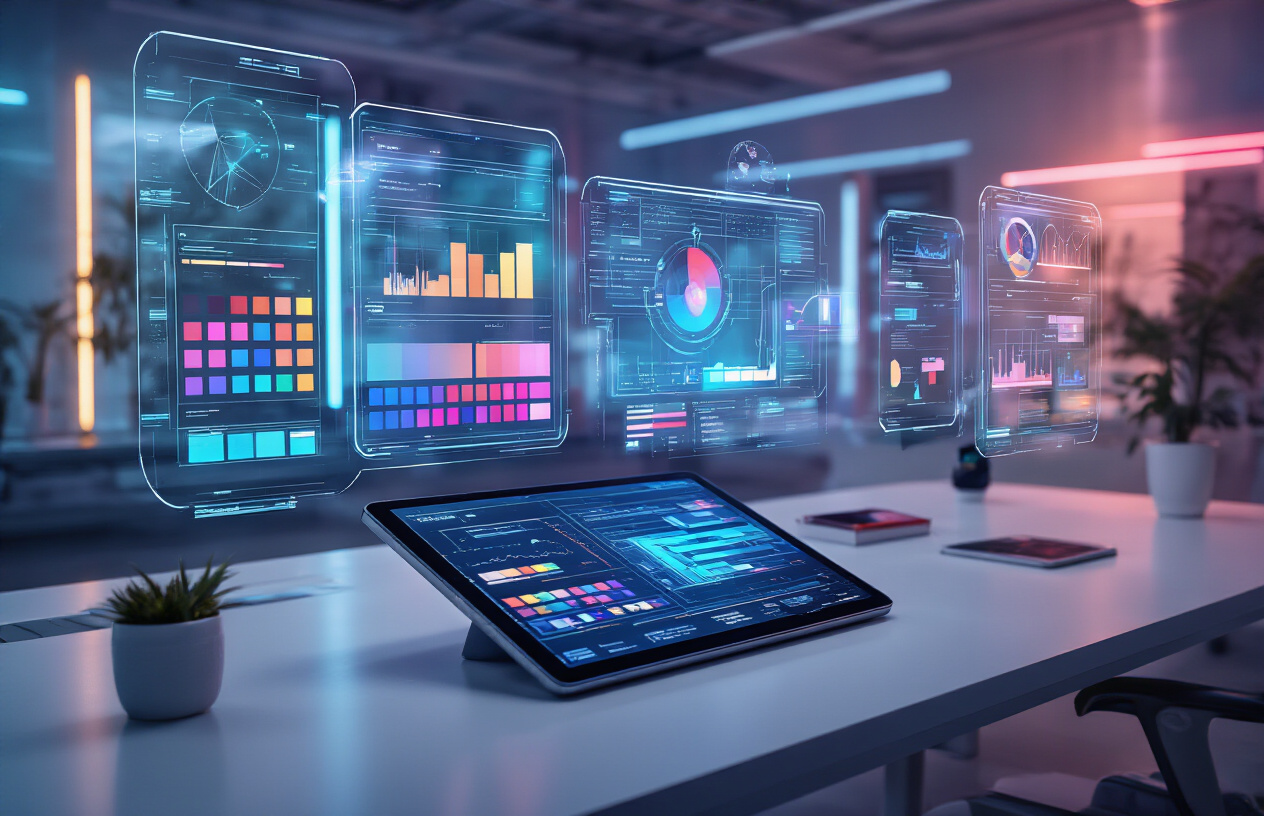
A. Predictive color analytics based on consumer response
Color isn’t just pretty—it’s powerful. The AI tools of 2025 aren’t just suggesting colors anymore; they’re predicting how your audience will react to them.
Think about it: algorithms now track eye movement, purchase behavior, and even emotional responses to specific color schemes. That blue you love? AI might show it converts 23% better with your target demographic.
These predictive systems go beyond basic aesthetics to analyze:
- Seasonal color trend forecasting
- Industry-specific color effectiveness
- Demographic color preference mapping
One designer I spoke with said, “I was skeptical until the AI recommended a purple I’d never have chosen. Our engagement jumped 40% overnight.”
B. Accessibility-focused automatic adjustments
The most remarkable thing about 2025’s AI color tools? They make inclusion automatic.
Today’s systems don’t just check contrast ratios—they actively reshape your entire palette to work for everyone while maintaining your brand identity. Color blindness, low vision, and cognitive disabilities—all addressed without sacrificing your aesthetic.
The tech now simulates how your colors appear to different users in real-time and offers innovative alternatives that preserve your brand feel while maximizing readability.
“My client never realized their signature green was invisible to 8% of their audience,” a UX designer told me. “The AI fixed it without changing their visual identity.”
C. Cross-cultural color optimization for global brands
Gone are the days when expanding globally meant color disasters. Remember when that American brand unknowingly used funeral colors for their Chinese market launch?
Today’s AI color systems maintain cultural databases that are frighteningly comprehensive. They flag potential issues and suggest culturally-appropriate alternatives that still feel like your brand.
These tools now:
- Map color connotations across 200+ cultures
- Analyze regional color trends and preferences
- Suggest subtle palette shifts for different markets
One global brand manager shared: “We used to spend months researching cultural color meanings. Now the AI handles it instantly, saving us from embarrassing mistakes.”
D. AR/VR color experiences driven by AI recommendations
The metaverse changed everything about how we experience color. Static palettes? That’s so 2023.
AI now creates dynamic color systems that adapt to virtual environments, user preferences, and even time of day. Your brand red might subtly shift to maintain its impact whether a user is in a bright VR beach scene or a dimly lit virtual store.
The tech is eerily smart about maintaining color constancy across platforms while optimizing for:
- Varying light conditions in virtual spaces
- Device-specific display capabilities
- User comfort during extended AR/VR sessions
“Our virtual showroom adapts its colors based on where customers are physically located,” one retail tech director explained. “The AI ensures our brand feels consistent whether you’re browsing from a sunny room or at night.”
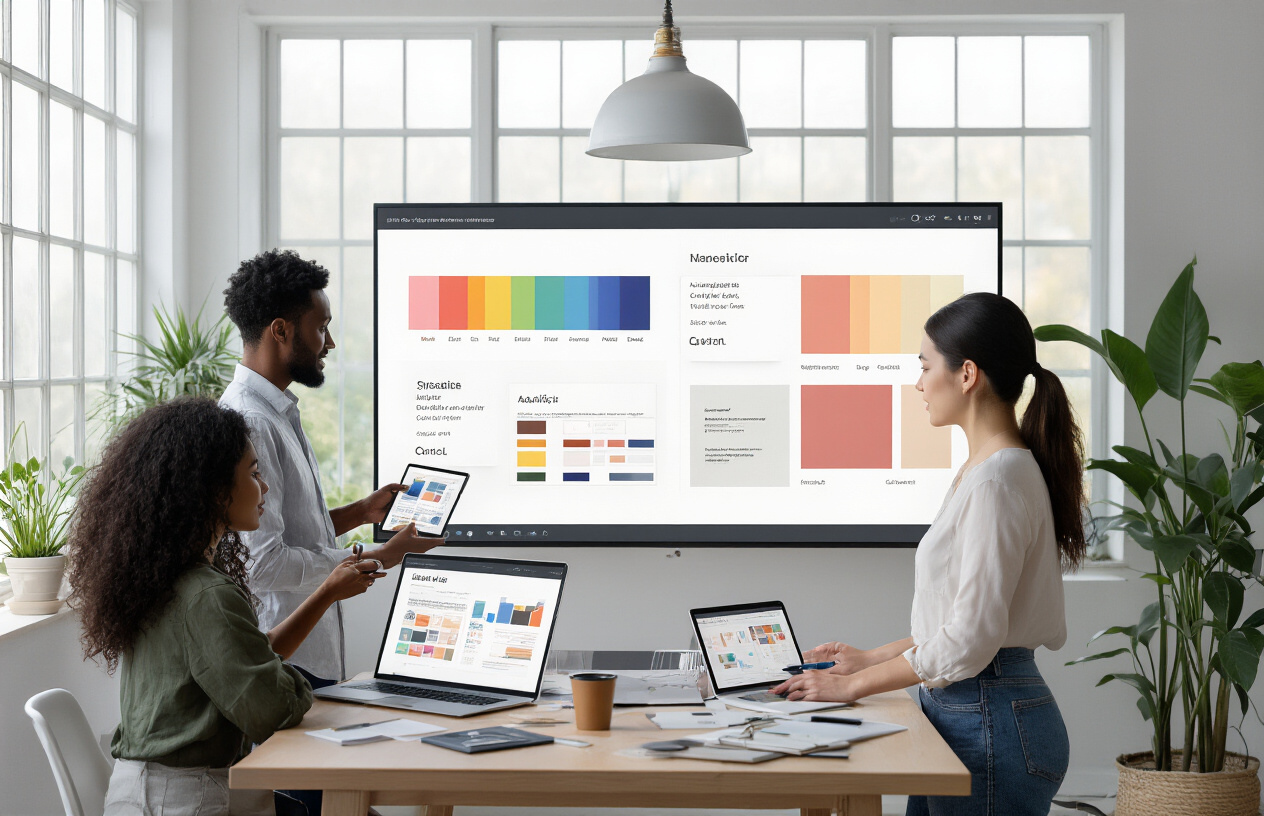
AI color palette generators have revolutionized brand consistency, offering sophisticated tools that save time while delivering professional results. From their evolution into advanced systems to the diverse options available in 2025, these technologies now form the backbone of modern branding strategies. By automatically generating cohesive color schemes and maintaining consistency across platforms, they’ve proven their value through measurable ROI improvements in brand recognition and design efficiency.
As you implement these tools into your workflow, remember that AI color management will continue evolving toward even more personalized and context-aware solutions. Whether you’re a solo designer or managing enterprise-level branding, embracing AI color palette technology isn’t just about staying current—it’s about positioning your brand for sustainable visual success in an increasingly competitive digital landscape.
Harnessing the power of an AI Color Palette streamlines artistic decisions and strengthens brand cohesion across digital projects. Whether you’re refining site visuals through our Elementor Support, building custom functionality via our Developing Custom Plugins for WordPress, or shaping holistic experiences as a Creative Director, intelligent design tools boost both creativity and consistency. Explore how AI-powered styling can transform your workflows in our AI Color Palette resource hub.


